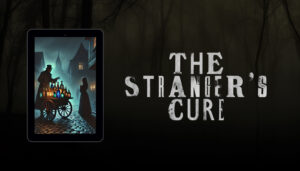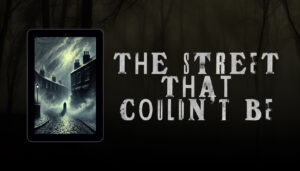Ever wondered what makes your heart race and your skin crawl when you dive into a good horror story?
Well, get ready to uncover the secrets behind the spine-tingling sensation we all know and love. In this article, we’re peeling back the layers of fear, and exploring its fascinating role in horror writing.
From the primal instincts that send shivers down your spine to the crafty techniques that keep you on the edge of your seat, we’re diving deep into the psychology of fear.
Primal Fear: Unveiling the Core of Horror
Within the shadows of horror literature, primal fears lurk, awaiting their chance to seize readers’ minds and hearts.
These fears, deeply embedded in our collective consciousness, form the foundation of some of the most chilling tales ever told. Let’s delve into four primal fears that have plagued humanity for centuries.
First, the fear of the unknown grips us tightly. It’s the fear of what hides in the darkness, the uncertainty that looms just beyond the edges of our understanding.
This fear evokes a primal instinct for survival and is clear to see in “House of Leaves” by Mark Z. Danielewski. The story’s labyrinthine structure mirrors the psychological descent of its characters into the unknown depths of a mysterious house, playing on readers’ fears of what lies beyond the limits of comprehension.
Next, the fear of confinement strikes at our primal need for freedom. Basically, it’s claustrophobia.
In “Bird Box” by Josh Malerman, the protagonists’ blindfolded journey through a world overrun by unseen horrors forces readers to confront their own fears of confinement and helplessness, heightening the tension with each step into the unknown.
Then there’s the fear of the monstrous, those creatures that defy the laws of nature and reason. Take “The Troop” by Nick Cutter, where a group of Boy Scouts must fend off a parasitic organism that turns its hosts into ravenous, cannibalistic monsters.
Cutter’s visceral descriptions and relentless pacing immerse readers in a nightmarish world where the line between man and monster blurs, evoking a primal fear of the grotesque and unknown.
Here’re some more examples:
- “The Ballad of Black Tom” – Victor LaValle
- “Annihilation” – Jeff VanderMeer
- “The Cabin at the End of the World” – Paul Tremblay
- “The Terror” – Dan Simmons
- “The Luminous Dead” – Caitlin Starling
The Power of Pacing: Balancing Terror and Rest
Pacing is the heartbeat that drives the narrative forward, dictating the rhythm and flow of the story. It’s the art of knowing when to tighten the screws and when to release the tension, keeping readers on the edge of their seats with every turn of the page.
At the core of effective pacing is the strategic use of tension and release, alternating between moments of escalating dread and brief respites of calm.
This creates a rollercoaster effect, heightening the reader’s emotional response and intensifying the impact of each terrifying revelation.
Consider “The Shining” by Stephen King, where the slow build-up of tension gradually escalates to a fever pitch, culminating in a series of heart-pounding encounters with the supernatural.
King’s meticulous pacing keeps readers teetering on the brink of terror, never sure when the next scare will strike.
Another crucial aspect of pacing is the careful balance between slow-burn tension and sudden shocks.
Slow-burn tension involves gradually building suspense over time, letting the fear simmer beneath the surface until it reaches a boiling point.
In “The Turn of the Screw” by Henry James, the creeping sense of dread steadily intensifies as the governess becomes increasingly convinced that her charges are being haunted by malevolent spirits.
James’ deliberate pacing creates an atmosphere of mounting unease, culminating in a series of chilling revelations that leave readers gasping for breath.
Sudden shocks are like lightning bolts, striking without warning and jolting readers out of their complacency.
These unexpected moments of terror catch readers off guard, leaving them reeling in shock and disbelief. Take “The Exorcist” by William Peter Blatty, where the sudden onset of demonic possession shocked readers and viewers (at the time at least) to their core, and challenges their beliefs about innocence, religion and sacrifice.
Blatty’s expert pacing ensures that each shocking moment lands with maximum impact, leaving readers trembling with fear long after the book is closed.
Have you read any of these examples?
- “The Girl Next Door” – Jack Ketchum
- “Intensity” – Dean Koontz
- “I’m Thinking of Ending Things” – Iain Reid
- “The Silence of the Lambs” – Thomas Harris
- “Pet Sematary” – Stephen King
Psychological Depth: Exploring the Depths of Human Fear
From the haunting echoes of past traumas to the gnawing grip of obsession and the creeping tendrils of madness, horror stories shine a light on the shadowy corners of our minds.
Let’s uncover how writers masterfully wield psychological depth to create characters and narratives that resonate with readers on a profound emotional level.
At the heart of psychological depth lies the exploration of trauma — the scars left behind by experiences that continue to haunt and shape us.
Authors like Gillian Flynn, in “Gone Girl,” delve into the complexities of trauma and its lasting effects on the human psyche, weaving a tale of deception and manipulation that forces readers to confront their own fears of betrayal and abandonment.
Through the lens of psychological horror, Flynn exposes the raw vulnerability of her characters, inviting readers to empathise with their struggles and confront the darkness within themselves.
Obsession is another fertile ground for exploration in horror literature, tapping into our deepest fears of losing control and surrendering to the irrational impulses that drive us.
In “The Girl with All the Gifts” by M.R. Carey, the protagonist’s obsessive quest for knowledge leads her down a dark and dangerous path, blurring the lines between humanity and monstrosity.
Carey’s exploration of obsession serves as a chilling reminder of the thin veil that separates sanity from madness, urging readers to question their own capacity for obsession and the lengths they would go to satisfy their desires.
Madness looms large in the annals of horror literature, casting a long shadow over characters who teeter on the brink of sanity.
In “The Yellow Wallpaper” by Charlotte Perkins Gilman, the protagonist’s descent into madness is vividly depicted as she becomes increasingly obsessed with the patterns of the wallpaper in her room.
Gilman’s exploration of madness serves as a haunting allegory for the oppression faced by women in a patriarchal society, shedding light on the psychological toll of confinement and gaslighting.
Here’re some more books for you to look at:
- “The Secret History” – Donna Tartt
- “The Woman in the Window” – A.J. Finn
- “The Silent Patient” – Alex Michaelides
- “Sharp Objects” – Gillian Flynn
- “We Need to Talk About Kevin” – Lionel Shriver
In summary
As we reach the end of our journey into the depths of fear and terror in horror literature, let’s take a moment to think about what makes these tales so undeniably gripping.
What aspect resonates most with you? Is it the primal fears lurking within, or perhaps the masterful pacing that keeps you on the edge of your seat? Let me know in the comments below or give me a shout over on socials.
So, until next time, keep turning those pages. Happy reading, and may you always find yourself drawn to the macabre.



